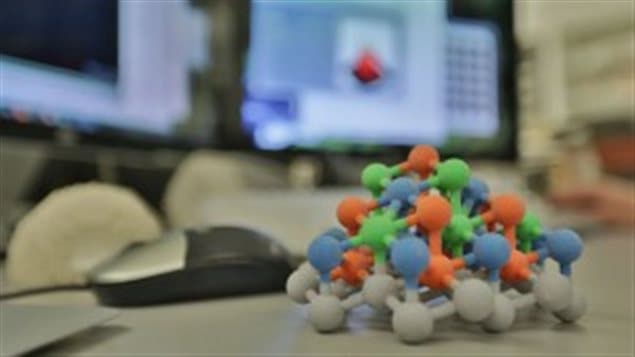Transistor technology is basic to all computing devices, but it is reaching its limits in terms of performance and miniaturization, according to Robert Wolkow (PhD) in the Department of Physics at the University of Alberta and principle researcher at the National Institute of Nanotechnology (NINT)
Professor Wolkow led a team of researchers who have created an atom scale device that could replace the transistor.
ListenSuch new devices would likely be much more expensive at first but, require far less material to create and use far less power, be faster and more efficient, and therefore overall would be “greener” and generate far less heat.

The team was able to demonstrate that a silicon atom could be controllably charged to act in the same way as current transistor technology, creating the on/off situation or the “ones and zeros” that are basic to computing.
These ‘quantom dots” as they are known, can confine electrons similar to the way the pockets on a billiards table hold the balls.
They can also be placed so closely together that electrons can be in two “pockets” at once, allowing interaction and sharing of the electrons. Wolkow says this is ideally suited to computing.
(see video animation at bottom showing how atomic “quantum dots” could lead to revolutionary, ultra-low-power electronics. Video courtesy Robert Wolkow) –
Previous experiments similar to this required extremely low temperatures, whereas the Canadian led research was able to achieve this effort at room temperatures, a critical advance.
Professor Wolkow notes that it may take about 5 more years of research to prove the concept and develop it into commercial use. He says due to the cost factor, initially such nano-computing technology will be incorporated as an adjunct to current technologies and likely in expensive niche market areas.
He says it may take another 5 years for the costs to come down and development into consumer level devices.
While creating devices which operate on the level of single atoms may seem far-fetched to some, or that its everyday usefulness doubtful, professor Wolkow points out that initially all breakthroughs such as in television, radar, or mobile phones were initially viewed as being in the realm of science fiction before becoming commonly used concepts.







For reasons beyond our control, and for an undetermined period of time, our comment section is now closed. However, our social networks remain open to your contributions.